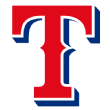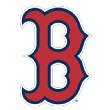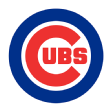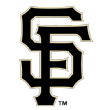The middle group of 10 teams includes last year's two pennant winners, both of whom still have some young talent on the horizon despite last summer's big trades, as well as five other teams expected to contend for playoff spots this season.
While it's certainly difficult to maintain a strong farm system while contending -- you promote prospects who can help you, and you trade others to fill holes you can't fill internally -- it's not impossible, as you can see quite clearly from the teams listed today.
 11. Minnesota Twins
11. Minnesota Twins
2016 rank: 3
The Twins have been drafting high for a while now, and it’s starting to have a positive effect on their big league roster, but there’s still a lot of talent on its way. They even have some pitchers who throw hard for once. What they don’t have, at least anywhere at a full-season level, is a future star -- a No. 1 or No. 2 starter, a middle of the order bat, a potential MVP candidate, nothing quite like that.
They have a surfeit of players who should have major league value: a half-dozen or so potential midrotation starters, a slew of hard-throwing relievers and a few high-probability position players, led by shortstop Nick Gordon. Their potential stars are still in short-season ball and probably four to six years away from the majors, which means their probability is low and so is their potential value to other clubs.
The Twins might have those potential stars in the majors already -- Byron Buxton, Miguel Sano, Max Kepler -- and could add one with the first overall pick in this June’s draft, but at the moment, that’s the one real weakness of their farm.
 12. Houston Astros
12. Houston Astros
2016 rank: 17
It’s a coincidence that the Astros and Cardinals are next to each other ... or is it? They employ similar philosophies, they’re both trying to balance winning now with maintaining a pipeline for the major league roster, and now the Astros are no longer drafting in the top 10.
Houston’s system has lost a ton of talent in the last two years -- their top two prospects from last year, Alex Bregman and A.J. Reed, both graduated -- but they’ve managed to keep it backfilled with extremely strong drafts and shrewd trades.
They even saw big steps forward from a few players already in the system, with Teoscar Hernandez reaching the majors and Ramon Laureano emerging as a legitimate offensive prospect. They’re a little light at the three infield skill positions (second, third and shortstop) and behind the plate, but they can at least rest easy knowing their major league infield is set for a while.
2016 rank: 19
The Cardinals’ system might only have one likely star -- Alex Reyes -- in it, but the remainder of their organization is loaded with players who look likely to play in the majors as at least extra guys, and their Palm Beach (high-A) rotation in 2017 might provide a second or third future star as well.
The real strength of this system, though, is its depth with starting pitchers and with position players who are likely to remain in the middle of the field. This should give the major league team the versatility they seem to value highly in hitters and will give GM John Mozeliak assets with greater trade value as well.
They’ve drafted well, but I think even more value has come from their international department, which is responsible for four of their top 10 guys and about half of the valuable players beyond that.
2016 rank: 6
The Phillies have a good farm system that had a bad year in 2016, with six or maybe seven of their top 10 guys coming into the season underperforming, getting hurt or both.
As good as J.P. Crawford could be, he scuffled in Triple-A at the plate. He clearly has some adjustments to make and another gear to find before he can become a superstar in the majors, while Mark Appel, a key part of the return for Ken Giles, struggled badly before his season ended because of elbow surgery.
There were bright spots -- Dylan Cozens and Rhys Hoskins took advantage of a good power park in Reading to break out with 78 homers between them, and some of the Phillies’ unheralded Latin American pitchers emerged as potential midrotation starters given enough time.
For the rest of their near-to-the-majors prospects, 2017 looks like a critical season, whether it’s about getting healthy or performing well enough in Triple-A to earn a big league job.
 15. Texas Rangers
15. Texas Rangers
2016 rank: 9
The Rangers’ top 10 this year bears little resemblance to their top 10 from last year, as they promoted their first two guys, traded the next three and No. 10 as well. Prospect No. 9, Mike Matuella, made one appearance all year before getting hurt again.
So their system is no longer among the game’s strongest, which it’s been for most of the time I’ve been assembling these lists. Thanks to the team’s superaggressive approach in Latin America, they still have a lot of high-upside talent left in the system’s lower levels. Their top five prospects were all signed by the Rangers from Venezuela, the Dominican Republic or Panama. Only one other team has as many as four Latin American prospects in its top five.
There are still potential stars here, on both sides of the ball, but the Rangers aren’t likely to get much if any big league help from the system in the next two seasons.
 16. Boston Red Sox
16. Boston Red Sox
2016 rank: 10
The Red Sox have dealt heavily from their system since Dave Dombrowski took over, trading three top-25 prospects just since last June, to make the major league team the best in the AL on paper. But that has left them with the most top-heavy system in baseball.
Boston has three elite prospects leading off their system, led by the barely-eligible Andrew Benintendi. But after that troika and Sam Travis (who is coming back from an ACL tear), it’s a quick drop to players who either have much lower ceilings or much lower probabilities of becoming average big leaguers.
Some creativity in this past draft helped, with the team landing my No. 2 prospect in the class, Jason Groome, with the 12th overall pick. Also, fourth-rounder Bobby Dalbec’s pro debut was very promising, but all those trades and two years out of the international market have thinned out the system quite a bit.
2016 rank: 11
Another team that harvested heavily to get to the World Series last year, Cleveland retains great depth in its system, with potential back-end starters and fringe regulars beyond their top 10 prospects, but with few potential stars beyond catcher Francisco Mejia and some of the kids who were still in rookie ball this year.
Trading Clint Frazier and Justus Sheffield sliced a layer right off the top of the system, but Cleveland has done well with later draft picks who’ve at least turned into viable major league assets. Cleveland then turned around this past draft and rolled the dice on two high school hitters with huge ceilings who are both several years away from even reaching Double-A.
They’ve also benefited from an apparent focus in the international market on players who at least might play in the middle of the diamond, even though the presence of Francisco Lindor may move a few of them to corners. The system that produced last year’s AL pennant winner seems like it should keep the big league club supplied with the extra pieces that a low-payroll team such as Cleveland should never try to buy on the open market.
 18. Chicago Cubs
18. Chicago Cubs
2016 rank: 4
You can’t complain, Cubs fans, although some of you will. The front office used the fruits of years of strong drafts and trades to bolster the big league club via promotions and the deal for Aroldis Chapman. The result was a world championship.
Even with the trade of Gleyber Torres, the Cubs still have a very high-end hitting prospect in teenager Eloy Jimenez -- the guy who hit a ball in the Futures Game that bounced off the third story of the left field façade at Petco Park -- and some midlevel starting pitching depth coming, with one potential ace if the guy can just stay healthy.
Between the trades, promotions, and lack of a Day 1 draft pick in 2016, this is a thinner system than it was a year ago. It will probably stay down for a while now that the team is in full-throttle contention mode.
 19. Tampa Bay Rays
19. Tampa Bay Rays
2016 rank: 14
The Rays had a trio of top pitching prospects who appeared to be on the fast track to the big league rotation, but all three had rough years, with Brent Honeywell missing time because of injury, Taylor Guerrieri losing his fastball and Jacob Faria losing his command.
Between that, losing Blake Snell to the majors and the disastrous year from their 2015 first-rounder Garrett Whitley, this could have been a catastrophic year for a team that depends on its farm system to have any shot of contending.
Yet there were positives throughout the system too, especially on their Double-A Montgomery club, which might end up producing a half-dozen big leaguers from its lineup, three of them regulars.
Adrian Rondon, who got Tampa’s biggest July 2 signing bonus ever, improved dramatically over 2015, and they added another shortstop and international bonus baby by acquiring Lucius Fox from San Francisco. They may face a pitching deficit if the trio mentioned above can’t turn things around, but there are bats coming, and for the first time in a while, some high-ceiling guys to get you excited.
2016 rank: 21
The Giants continue to find good value beyond the first round, with players in their top 10 coming from Round Nos. 2, 5, 6 and even 23, after the two high first-round picks who lead off their system.
A big step forward this year from Tyler Beede was somewhat offset by a step back for Christian Arroyo, and three of last year’s top 10 prospects departed in midseason trades for Matt Moore and Will Smith.
The system does seem primed to continue to pump out extra pieces for the major league roster -- fifth starters, quality relievers, extra outfielders -- to avoid the need for future trades for extra guys like the one that sent Adalberto Mejia to the Twins for Eduardo Nunez.

 13.
13.  14.
14.  17.
17.  20.
20.